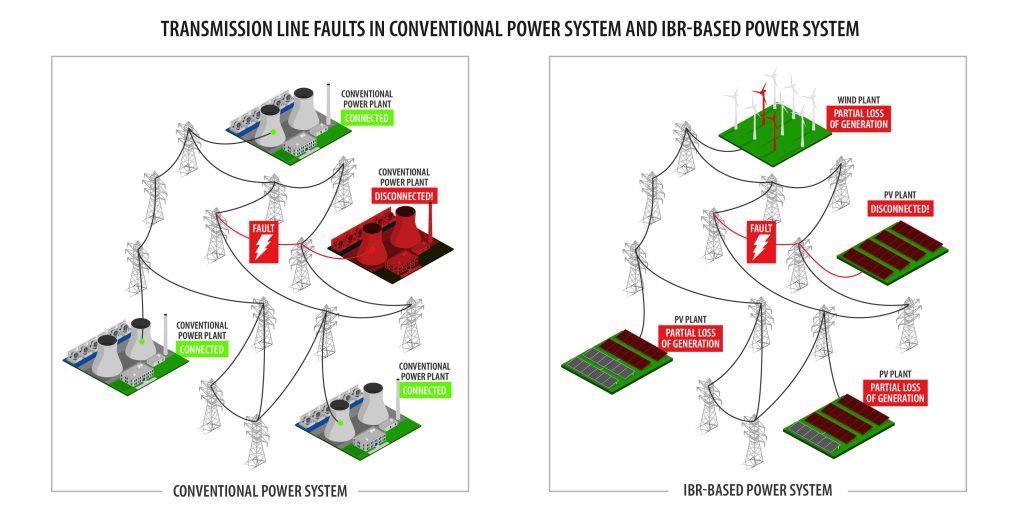
Department of Energy researchers have figured out a way to help keep the grid resilient as the US rapidly electrifies.
Researchers at the Department of Energy’s Oak Ridge National Laboratory (ORNL) have been undertaking research to better understand the effects of electrical faults in the modern US power grid.
Faults are abnormal conditions in an electrical circuit that interrupt the flow of power and can cause blackouts. Faults can be caused by equipment failure, human error, weather events, and natural disasters. If electric companies and system operators understand them, then they can reduce the number of outages.
However, traditional modeling methods are less effective at predicting how new digital technology will behave. Inverters are also being added to the grid along with EV chargers and clean energy, and they alter the flow of electrical current to match the larger transmission system.
Compared to mechanical systems, power electronics are much faster-acting, and they’re affected differently by faults in distant parts of the grid. But researchers at ORNL point out that most power companies have not adjusted their planning to reflect these digital technology changes.
So the North American Electric Reliability Corporation (NERC), an international regulatory authority responsible for grid reliability, is asking utilities and operators to use a new method to probe the causes and effects of faults – electromagnetic transient (EMT) domain analysis.
The Institute of Electrical and Electronics Engineers explains EMT domain analysis as “when it is necessary to analyze the interaction between the (electric) energy stored in capacitors and the (magnetic) energy stored in inductors.”
EMT domain analysis is expected to portray rapidly unfolding events more accurately. “As the grid transformation happens with more inverter-based resources and EV chargers, EMT is needed to understand the reliability of the system,” said ORNL researcher Suman Debnath.
Operators and utilities need to upgrade new methods and tools in order to retain service reliability, especially as they plan future interconnections and transmission system expansions.
That’s because faults affect modern systems with many inverter-based resources (IBRs) such as solar and wind differently than they do a conventional power system:

Debnath’s team of ORNL researchers worked with electric utility Southern California Edison to conduct one of the first successful fault replications using EMT this year after integrating their own models and algorithms into an EMT domain analysis tool.
Running the simulation in the ORNL lab and in hardware at Southern California Edison, they accurately reproduced the effects of a 2018 California fault on a large solar plant.
Md Arifujjaman, senior engineer for grid technology innovation at Southern California Edison, said:
Developing a high-fidelity model will help utilities better understand the physical dynamics of the power electronics, thus improving grid performance and aligning with our future vision of grid modernization.
This kind of project helps us a lot. The more dynamics you can present, the better for us, for the grid, and for the customer.
Read more: As the US heats up, here’s how you can help prevent blackouts
Photo: Shutterstock; Illustration: Philip Gray/ORNL, US Department of Energy
If you’re considering going solar, it’s always a good idea to get quotes from a few installers. To make sure you find a trusted, reliable solar installer near you that offers competitive pricing, check out EnergySage, a free service that makes it easy for you to go solar. It has hundreds of pre-vetted solar installers competing for your business, ensuring you get high-quality solutions and save 20-30% compared to going it alone. Plus, it’s free to use, and you won’t get sales calls until you select an installer and share your phone number with them.
Your personalized solar quotes are easy to compare online and you’ll get access to unbiased Energy Advisors to help you every step of the way. Get started here. –ad*
Author: Michelle Lewis
Source: Electrek



